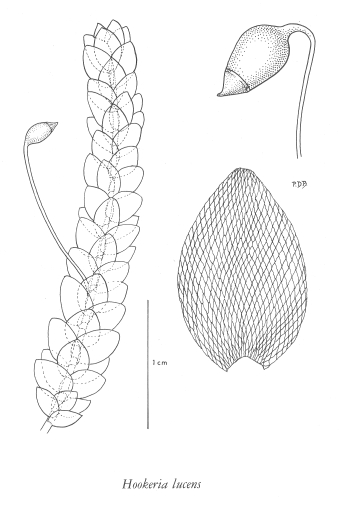E-Flora BC: Electronic Atlas of the Flora of British Columbia
Hookeria lucens (Hedw.) Sm.
shining clear-moss (hookeria moss) Hookeriaceae Species Account Author: Wilf Schofield Extracted from Some Common Mosses of British Columbia Introduction to the Bryophytes of BC
|
|||||||||||||
